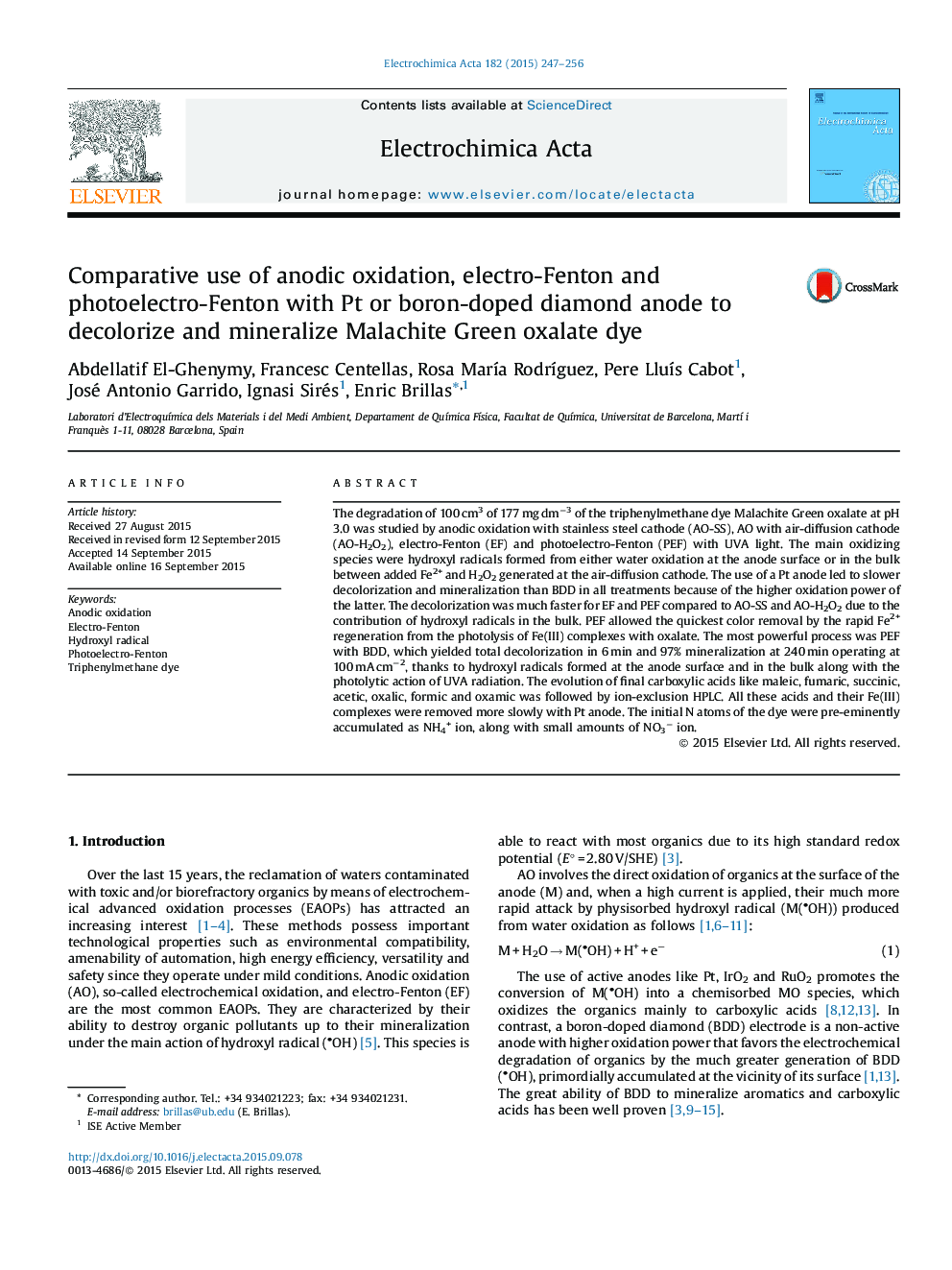| Article ID | Journal | Published Year | Pages | File Type |
|---|---|---|---|---|
| 6609887 | Electrochimica Acta | 2015 | 10 Pages |
Abstract
The degradation of 100 cm3 of 177 mg dmâ3 of the triphenylmethane dye Malachite Green oxalate at pH 3.0 was studied by anodic oxidation with stainless steel cathode (AO-SS), AO with air-diffusion cathode (AO-H2O2), electro-Fenton (EF) and photoelectro-Fenton (PEF) with UVA light. The main oxidizing species were hydroxyl radicals formed from either water oxidation at the anode surface or in the bulk between added Fe2+ and H2O2 generated at the air-diffusion cathode. The use of a Pt anode led to slower decolorization and mineralization than BDD in all treatments because of the higher oxidation power of the latter. The decolorization was much faster for EF and PEF compared to AO-SS and AO-H2O2 due to the contribution of hydroxyl radicals in the bulk. PEF allowed the quickest color removal by the rapid Fe2+ regeneration from the photolysis of Fe(III) complexes with oxalate. The most powerful process was PEF with BDD, which yielded total decolorization in 6 min and 97% mineralization at 240 min operating at 100 mA cmâ2, thanks to hydroxyl radicals formed at the anode surface and in the bulk along with the photolytic action of UVA radiation. The evolution of final carboxylic acids like maleic, fumaric, succinic, acetic, oxalic, formic and oxamic was followed by ion-exclusion HPLC. All these acids and their Fe(III) complexes were removed more slowly with Pt anode. The initial N atoms of the dye were pre-eminently accumulated as NH4+ ion, along with small amounts of NO3â ion.
Related Topics
Physical Sciences and Engineering
Chemical Engineering
Chemical Engineering (General)
Authors
Abdellatif El-Ghenymy, Francesc Centellas, Rosa MarÃa RodrÃguez, Pere LluÃs Cabot, José Antonio Garrido, Ignasi Sirés, Enric Brillas,
